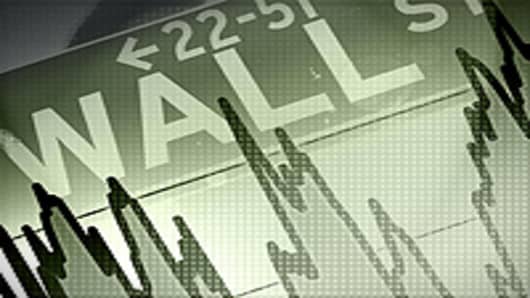Goldman Sachs is bullish on the U.S. economy for 2011, and forecasts U.S. stocks will see their third straight year of gains.
The investment banking powerhouse sees the S&P 500 gaining nearly 25 percent to a level of 1450 in the next 12 months, fueled by strong corporate profits, easy monetary policies and an improving U.S. economy.
Goldman sees stocks gaining as the U.S. economic growth accelerating from 2.5 to 4 percent by the end of 2012, but says investors will continue to have doubt. (Watch comments by Goldman's Chief U.S. Investment Strategist David Kostin in the video clip later in this story.)
“Despite these many positives, the equity investing landscape is hard to decipher,” Goldman’s U.S. investment strategy team writes in its 2011 U.S. equity forecast, which is headlined “Easy Money, Hard Market.”
Investors remain understandably skeptical about positive economic data, Goldman says, because the improvement is coming from a fairly low base. But the strategists argue with strong corporate balance sheets, low inflation and interest rates that “the path of earnings growth has rarely been smoother.”
Goldman is recommending its clients increase their investments in cyclical sectors. It continues to overweight technology, and has raised its outlook on energy and financials to overweight from neutral.
Goldman also recommends investors underweight defensive sectors like health care, consumer staples and utilities.
Long U.S. Bank Stocks
Goldman’s global investment team rates U.S. Large Cap Commercial Banks among its "Top Trades for 2011." The firm expects financial sector earnings to grow 24 percnet, with the economic recovery leading to improving loan demands and credit trends for the big banks. It also believes the large cap banks will get back to paying dividends in 2011.
The firm recommends clients gain exposure to the sector through the KBW Bank Index or SPDR ETF based on the index .
Commodities: Gold, Oil Higher in 2011
Goldman believes low U.S. interest rates will continue to underpin the rally in commodities like gold. The firm expects the precious metal futures to climb to $1,690 an ounce by the end of 2011 and continue to move higher.
But the firm believes prices will likely peak at $1,750 an ounce in 2012, as the U.S. recovery will see interest rates move higher.
Goldman’s commodities strategists also see oil futures rising to $105 dollars a barrel in 2011, and demand improving along with the U.S. economy. The firm notes, “Energy is historically the best performing sector when the ISM is above 50, which seems increasingly likely given strong October ISM and our US economists upgrade to their 2011 growth outlook.”
Currencies: Top Trade, Bad Call
Among the risks Goldman sees for 2011 is moderating growth in China, as Beijing tries to reign in inflation.
While its economic teams saw the improvement in U.S. growth lagging emerging markets in 2010, Goldman strategists believe the trend has reversed over the last six months, “with our US economics team now more constructive on domestic growth, but our China economists expecting monetary tightening through increases in interest rates and reserve requirements over the next three to six months.”
One of the firm’s top trades for 2011 involves shorting the U.S. dollar/Chinese yuan exchange. The firm argues low rates in the U.S. will keep the dollar lower, while China will have to let its currency rise next year, as it undertakes policies to control growth. “Rising external political pressure on the CNY from the US and other countries, as well as the threat of escalating trade tensions, expose China’s dependence on exports. More gradual CNY appreciation would help alleviate these tensions.”
While most of Goldman’s 2010 predictions on the U.S. stock market, commodities prices and economic growth have generally proven right on the money, its crystal ball was much more cloudy when it came to some key currency calls.
One of Goldman’s top trades for 2010 proved a big loser. The firm’s currency strategists recommended shorting the New Zealand dollar and going long the British pound, saying at the time, “We are more bullish on Sterling, linked to a stronger cyclical momentum in response to a large easing in financial conditions.”
But the Kiwi has been strong performer this year on the strength of the country’s rising commodity prices. The analyst who made that call reportedly apologized to clients in a recent note, saying it may have results in losses of more 12 percent.
Even Babe Ruth never batted a thousand.




